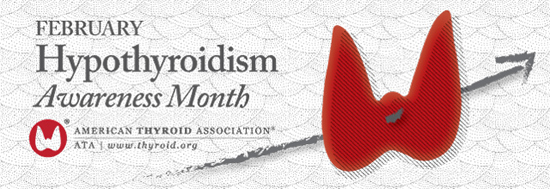Clinical Thyroidology for the Public summarizes selected research studies discussed in the previous month’s issue of Clinical Thyroidology, an official publication of the American Thyroid Association. Editor-in-chief, Alan Farwell, MD, FACE
Volume 11 Issue 2
Available in pdf format for saving and printing and Web page format for viewing online
PDF Format for Saving and Printing
Clinical Thyroidology for the Public Volume 11 Issue 2 (PDF file, 6.49 MB)
TABLE OF CONTENTS – Web Format
THYROID HORMONE TESTS Determination of optimal TSH ranges for reflex Free T4 testing
Many clinicians and laboratories check TSH alone as the initial test for thyroid problems and then only add a Free T4 measurement if the TSH is abnormal, referred to as “reflex” testing. The goal of this study was to evaluate different TSH cutoffs leading to reflex Free T4 testing, with the purpose to determine whether a widened normal range could decrease the need for additional Free T4 testing and not lead to missing cases of thyroid problems.
Henze M et al. Rationalizing thyroid function testing: Which TSH cutoffs are optimal for testing Free T4?. J. Clin Endocrinol. Metab. 2017. 102 (11): 4235-4241.
(PDF File for saving and printing, 615 KB)
THYROID NODULES The genetic characteristics of benign thyroid nodules
Thyroid nodules are common and the vast majority of thyroid nodules are benign. While the genetic mutations in papillary thyroid cancer have been well-characterized, the genetic characteristics of benign thyroid nodules are not well understood. The aim of this study was to define the genetic characteristics of benign thyroid nodules, in contrast to papillary thyroid cancer.Ye L et al The genetic landscape of benign thyroid nodules revealed by whole exome and transcriptome sequencing. Nature Commun 2017;8:15533.
(PDF File for saving and printing, 1.1 MB)
THYROID CANCER Multiple Variants of Noninvasive Follicular Neoplasm with Papillary-like Nuclear Features (NIFTP)
Follicular variant of papillary carcinoma is a common type of papillary thyroid cancer. Encapsulated forms of the follicular variant with the absence of certain adverse features has led to another variant termed noninvasive follicular neoplasm with papillary-like nuclear features (NIFTP), which is currently considered to not be a cancer. The goal of this study is to evaluate the molecular profile of NIFTPs in comparison to benign follicular adenomas and the invasive follicular variant of papillary thyroid carcinoma.
Giannini R et al. Identification of two distinct molecular subtypes of non-invasive follicular neoplasm with papillarylike nuclear features by digital RNA counting. Thyroid 2017;27:1267-76. Epub September 5, 2017.
(PDF File for saving and printing, 614 KB)
THYROID CANCER Ultrasound monitoring of small papillary thyroid carcinomas shows low rate of cancer growth
Because small papillary thyroid cancers are common and are overall low risk, observation (known as active surveillance) has been recommended as an option over surgery. In prior studies, only 10-15% of patients with small thyroid cancers have demonstrated cancer growth. The goal of the study was to evaluate growth of small papillary thyroid cancers over time to better determine treatment, monitoring and timing of surgery if necessary of these patients.
Tuttle RM et al. Natural history and tumor volume kinetics of papillary thyroid cancers during active surveillance. JAMA Otolaryngol Head Neck Surg. August 31, 2017 [Epub ahead of print].
(PDF File for saving and printing, 734 KB)
THYROID CANCER Multifocality is not an independent risk factor for recurrence of papillary thyroid cancer
Papillary thyroid cancer makes up about 85% of all thyroid cancers and overall has a good prognosis. It is not completely clear whether multifocal Papillary thyroid cancer is more aggressive and is more associated with chance of recurrence or spread outside of the neck than unifocal Papillary thyroid cancer. This current study has been done to evaluate the effect of multifocality on the outcome of Papillary thyroid cancer.
Wang F et al The Prognostic Value of Tumor Multifocality in Clinical Outcomes of Papillary Thyroid Cancer. J Clin Endocrinol Metab 2017; 102: 3241-50
(PDF File for saving and printing, 690 KB)





